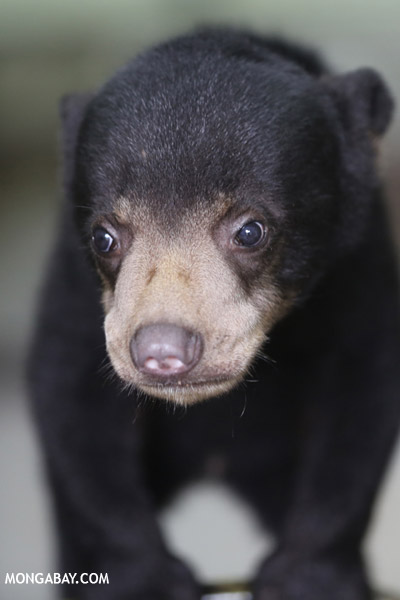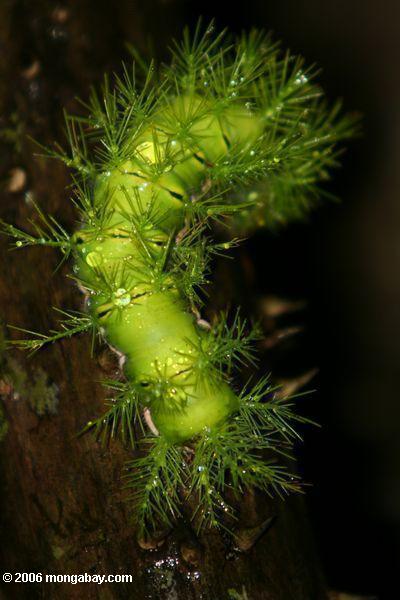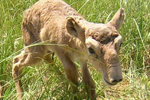Beautiful Birds of Panama
By Hannah Lindstrom Panama has a total of 972 bird species, of which 20 are considered to be globally threatened. Since the 1940’s, Panama’s tree cover has been reduced by over 50% which is having an effect on the avifauna of the nation. Species in Panama range from Giant Harpy Eagles, Panama’s national bird, to small species of kingfishers, with many in between....
Gummy grin: colobus monkey born at ZSL London Zoo
by Phyllis Sena The ZSL London Zoo welcomes baby Anvil, an Eastern Black and White Colobus monkey who is the new pride and joy of her mother, Sophia. Even though there is a stark contrast when it comes to appearance between mother and daughter, the jet-white newborn will eventually become black and white and better resemble her mother once she gets older. Anvil’s aunty Thumbelina is the only member of the family that is allowed to...
Adorable baby sun bear
by Jemma Smith The Sun Bear (Helarctos malayanus) is the smallest member of the bear (Ursidae) family. A patch on their chest enables them to be individually identified by the size, color and pattern variations between individuals. Very little is known about the sun bear; however, they are believed to be found throughout Southeast Asia, from India to Borneo. Listed as vulnerable on the IUCN’s Red List and are believed to be extinct in...
The howler in the forest
By Phyllis Sena Nicknamed “Howlers”, Howler monkeys are famously known for their deafening calls that can be heard up to three miles (five kilometers) away in the jungles of Central and South America. A cacophony of loud cries can be heard during dusk and dawn in order to send a message to other monkeys that the territory is being occupied by their group. Howlers are also considered to be the loudest land mammal on Earth. Howlers are...
Tiger Cub Caught on Camera
Written by Jemma Smith This image of a 4-5 month old tiger cub was recently captured on a remote camera in the India’s Bhadra Tiger Reserve. The Bhadra reserve was identified by the Wildlife Conservation Society (WCS) as one of 42 ‘source sites’ that are essential for the future of tigers. These sites are found within 9 different countries and are home to 70% of the remaining tiger population; although only make up 6% of their range....
Turtle Hatchling in Costa Rica
By Jordanna Dulaney A Olive Ridley sea turtle (Lepidochelys olivacea) hatchling. The Olive Ridley is named for its olive-colored heart-shaped shell, which changes from dark grey to olive as the turtle matures. Like other sea turtles, the Olive Ridley nests and hatch in tropical waters and then migrate to subtropical areas like the southeastern or eastern central Atlantic. Although it is considered the most abundant sea turtle in the...
Rare Siamese Crocodile’s Hatchlings Released
By Jemma Smith The Wildlife Conservation Society (WCS) has recently released 19 baby Siamese crocodiles into a local wetland in Lao PDR. The eggs of the crocodiles were discovered and collected during a wildlife survey back in 2011, hatched and reared at Lao Zoo as part of the Community-based Crocodile Recovery and Livelihood Improvement Project. The 19 month old hatchings were released near to where the eggs were found into a ‘soft...
Caterpillars in Colombia
by Hannah Lindstrom Caterpillars are the larval form of moths and butterflies. Since these creatures are so rich in protein, they tend to be a favored food source of many species. As a result, caterpillars have developed many a coping mechanism for this issue. Predators can easily be deterred by the appearance or size of a caterpillar. Bright colors, as seen in these pictures, usually makes an animal think poison, so they will tend to...
Rescued Wooly Monkeys in Colombia
Written by Jordanna Dulaney The woolly monkey (Lagothrix lagotricha) is listed as “Vulnerable” on the IUCN’s Red List. In fact, studies predict that the species will decline at least 30% in the coming 45 years. The IUCN cites hunting, habitat loss due to the expansion of farming land, and pet trafficking. These pictures were taken at a rehabilitation center for animals in the pet trafficking trade in Amacayacu National Park, Colombia....
Sea Turtles Released During Earth Hour
Written by Jemma Smith To commemorate this years Earth Hour and raise awareness of turtle conservation, the Chinese organization Sea Turtles 911 released two Green Sea Turtles (Chelonia mydas) back into the wild during this special hour. Earth Hour encourages businesses and households worldwide to switch off their lights for one hour between 8.30pm and 9.30pm on the 23rd of March. This is to raise awareness of climate change. This...
The river-horse of the Okavango Delta
Written by Alexander Holmgren The word hippopotamus comes from ancient Greek meaning “river horse” and this sturdy animal is the third largest land dwelling mammal in the world. It spends half of its time submerged in large groups in bodies of water such as rivers or lakes taking mud baths to keep itself cool in the hot African day. At dusk, as the sun begins to fall, the hippopotamus will depart from the water to graze on...
Master of Disguise: Oustalet’s Chameleon
These masters of disguise are endemic to Madagascar and can be found in a variety habitats ranging from urban to rural landscapes and moist to dry areas at various elevations. Oustalet’s Chameleon (Furcifer oustaleti) are known as the words longest chameleon maturing to nearly 70cm in length. Due to this widespread range there are listed as Least Concern on the IUCN’s Red List. They mainly feed on insects which they catch with...
What does a baby moose look like? (photos)
Moose and mom are doing fine. Photo courtesy of ZSL’s Whipsnade Zoo. It’s true that moose, also known as European elk (Alces alces), are odd looking animals, yet that doesn’t prevent their babies from being as endearing as any others. This baby moose, named Chocolate (get it?), was born at Zoological Society of London’s (ZSL) Whipsnade Zoo in late May. The moose are apart of the European Breeding Program. Photo...
Happy world oceans day! (photos)
Coastline in Colombia. Photo by: Rhett A. Butler. Celebrated since 1992, today is World Oceans Day! As apart of the day’s festivities, conservation organization Oceana is asking people to become Ocean Heroes by pledging to recycle, clean up a local waterway, or eat only sustainable seafood for the summer! Purple-striped jellyfish at the Monterey Bay Aquarium. Photo by: Rhett A. Butler. Leopard shark in a kelp forest at Monterey...
Antelope release! (photos)
Red hartebeest release. Photo courtesy of Colchester Zoo: Action for the Wild. Three antelope species were recently released at the Umphafa Private Nature Reserve in KwaZulu Natal, South Africa in an ongoing effort to restore an over-cultivated area. In all 7 impala, 21 red hartebeest, and 22 blue wildebeest were released. “These recent releases are exciting developments for UmPhafa. The releases of the wildebeest represent the...
Happy world turtle day! (photos)
Baby marine turtle taking its first step out to sea in Costa Rica. Photo by: Rhett A. Butler. Yes, there is a World Turtle Day created by the American Tortoise Rescue! And today (May 23rd) is that day! Ancient leopard tortoise in Uganda. Photo by: Rhett A. Butler. Sumatran freshwater turtle. Photo by: Rhett A. Butler. Sumatran freshwater turtle. Photo by: Jeremy Hance. Radiated tortoise in Madagascar. Photo by: Rhett A....
Bird-dinosaur, only recently dead, discovered in Iran (or big hoax)
An photo of the reported recently-deceased bird-dinosaur. Real or faked? Photo from the Islamic Republic News Agency. A corpse reportedly showing a bird with a skull like a canine’s has shown up in northwestern Iran, reports the Islamic Republic News Agency. The animal has two bird-like legs, but a head that looks like a mammalian or reptilian predator, giving the media the ability to dub it a dinosaur bird. A team of...
Pictures of baby animals with their mothers for Mother’s Day
Mother tarsier and baby on the island of Sulawesi in Indonesia. Photo by: Rhett A. Butler. Mother and baby orangutan in tree in Sumatra. Photo by: Rhett A. Butler. Mother Panamanian golden frog with green baby. Photo by: Rhett A. Butler. Southern Tree Hyrax with baby in Kenya. Photo by: Rhett A. Butler. Baby crowned lemur clinging to its mother in Madagascar. Photo by: Rhett A. Butler. Mother Agouti (Dasyprocta punctata) with babies...
Photos: ugly is the new adorable when it comes to saiga babies
A pair of saiga calves. Photo by: Igor Shpilenok. Few species have seen a worse decline in the past 15 years than the Asian antelope, the saiga. Once known for making up one of the world’s largest migrations, the saiga population has dropped from 1.25 million in the 1990s to 50,000 animals today, plunging over 90% and landing itself on the Critically Endangered species list. The Saiga Conservation Alliance (SCA), which is...

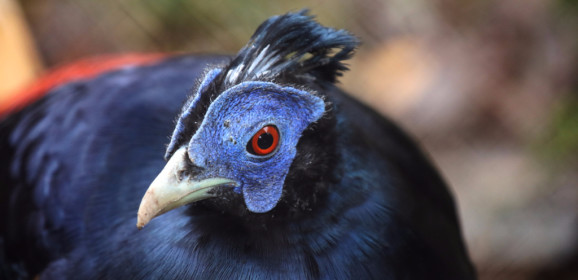

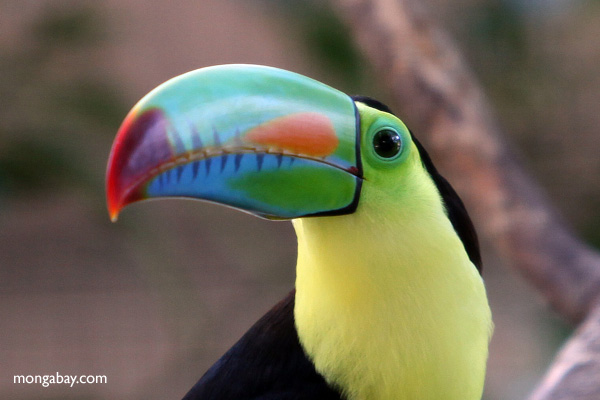
-Joanne-Iredale.jpg)
